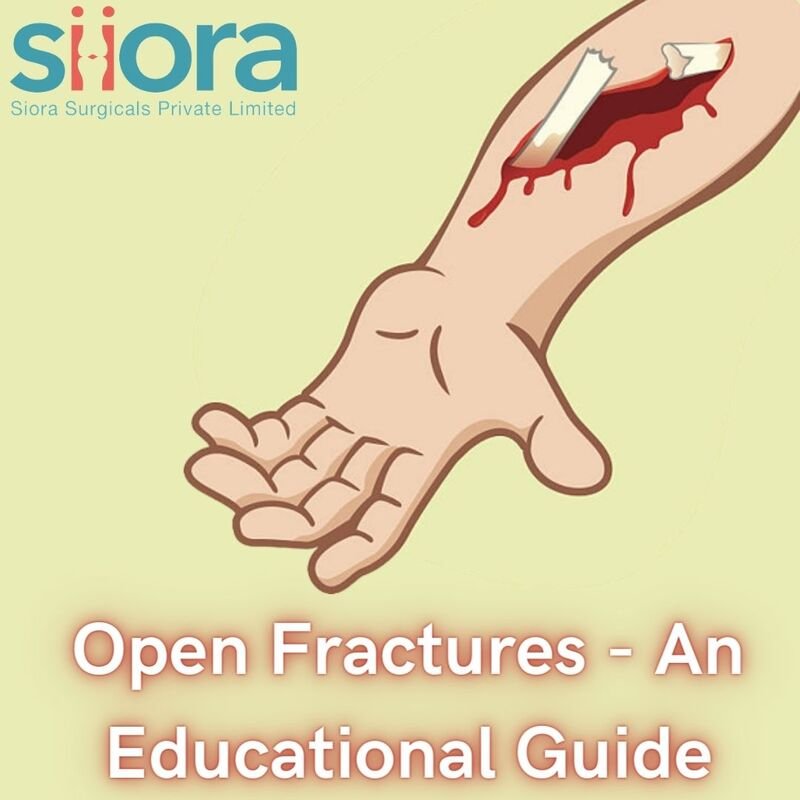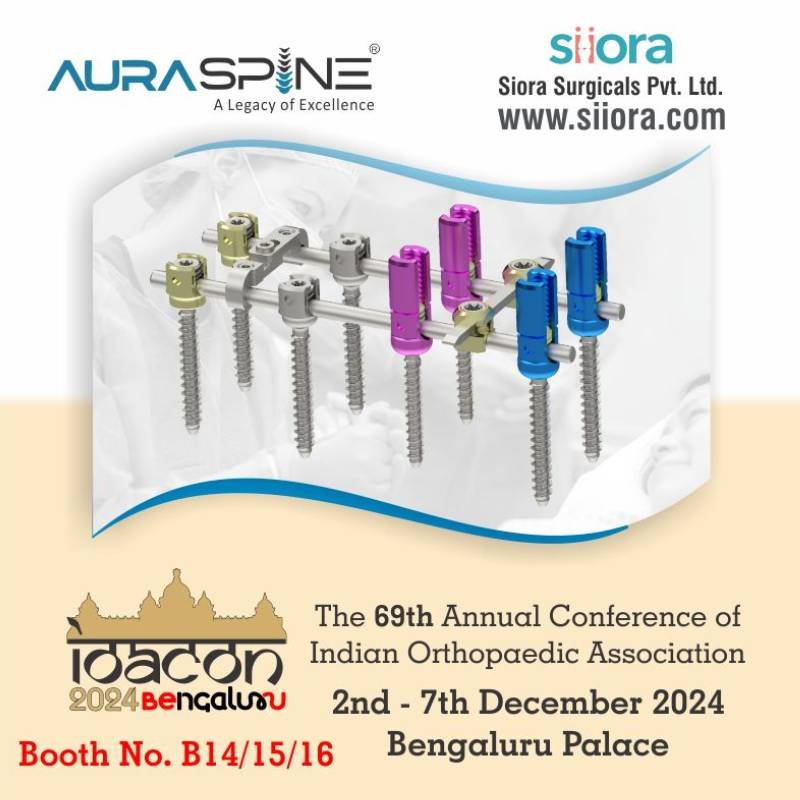Open fractures are serious orthopedic injuries that require immediate medical assessment by orthopedic specialists. These injuries occur because of severe trauma like high-energy car accidents or falling from a significant height. In this post, we will have a detailed discussion on open fractures along with their causes and treatment.
What Are Open Fractures?
Also known as compound fractures, open fractures are when the broken bone pierces the skin and makes direct contact with the external environment. These fractures accompany heavy bleeding because there is always an open wound. In open fractures, the wound occurs because of the sharp end of the broken bone fragment.
The severity of these fractures is very high and hence, they require complicated treatment. The treatment of open fractures is different from that of closed fractures. A team of orthopedic specialists and other medical professionals handle open fractures.
Why Open Fractures Are Serious?
You have read everywhere that open fractures are serious but why? Let us see have a look.
Open fractures mean that the fractured bone protrudes out of the skin. This is one of the factors that make such fractures serious. Besides this, high blood loss can lead to hypovolemic shock. This is why open fractures require urgent assessment.
As internal structures of our body break open in these fractures, they pose the risk of bacterial infection. This is another key reason why such fractures are serious. The infection here occurs because dirt and foreign particles enter the bloodstream through broken skin. If not addressed timely severe or lifelong complications may occur. This is why thorough cleaning of the wound and tissue is necessary during the treatment.
What Are the Causes of Open Fractures?
By now, it is clear that open fractures are serious. So, if we talk about the cause than serious injuries occur because of severe trauma. The most common cause of open fractures is the high-intensity car or bike accidents. Maximum open fractures reported across the globe are because of automobile accidents.
Besides this, gunshots or an impact with a solid and sharp object can also cause open fractures. People suffering from these fractures also experience injuries to other parts of the body. This is true in maximum cases.
How to Assess the Severity of Open Fractures?
Though open fractures are severe, their severity varies greatly from person to person, and the exact cause of the condition. In most cases, especially those that occur because of very high-intensity trauma, there is definite skin loss. Besides this, a significant part of the broken bone moves out by breaking the skin. In other cases, no obvious skin loss is there, and no significant part of the fracture comes in contact with the external environment. Here, the size of the wound is not big enough.
Now, it doesn’t matter whether the wound is big or small, injury to surrounding structures like muscles, tendons, nerves, veins, and arteries will always there. Certain factors define the severity of open fractures:
- Number and size of fractured bone fragments
- The intensity of damage to the surrounding tissues
- The location of the fracture and severity of blood supply in the affected area
The size of the wound and foreign materials that it gets contact with decides the severity of the infection. However, open fractures immediately put the person at risk of infection. The infection risk increases with the size of the wound and the extent of bone damage.
In most severe cases where it is not possible to cure the infection and the person’s life is at threat, the orthopedic surgeon will consider amputation. This is the reason why it is important to first prevent infection during the surgical intervention of open fractures.

What is the Diagnosis of Open Fractures ?
Well, no specific tests are required to confirm open fractures as experts can easily identify them just by having a look. The diagnosis is required to confirm the severity of the condition but at first, the patient will be taken to the emergency room (ER). The diagnosis will involve:
Physical Examination
During the physical examination, the orthopedic expert will evaluate for injuries other than fractures. The physical examination takes place in the ER. While examining the wound site, the healthcare service provider will look for damage to the nerves, soft tissues, and veins. Besides this, the orthopedic specialist will also examine the neurovascular status and look for skin or tissue loss.
If there is a need for plastic surgery, it should be addressed early because plastic surgery specialists need to be present during surgical intervention. This is to prevent multiple surgical procedures.
Blood Tests
Several blood tests including clotting profile and blood grouping will be performed. Screening for infection will also be there.
Imaging Tests
X-ray examination will identify the fracture along with its severity. X-rays can also detect the degree of displacement of the fracture. Besides this, the orthopedic specialist will also order other imaging tests like a CT scan or MRI to look for damage in the connective tissues including muscles, tendons, ligaments, and nerves.
What is the Treatment for Open Fractures?
Surgery is required for almost all open fractures as there is a significant displacement of the broken bone. However, a procedure is followed before the surgery is performed:
Debridement and Irrigation
Removal of contaminated materials and damaged tissue is most important to prevent infection before the surgery. During debridement, the surgeon may increase the wound size if it is small. This is required for the complete removal of contaminated and foreign materials.
After this, the healthcare service provider will also wash the wound with saline to clean it. After a thorough cleaning, the orthopedic surgeon will assess the fracture site to stabilize the broken bone.
Internal Fixation
After debridement and irrigation, the orthopedic surgeon will perform internal fixation. This is where the orthopedic surgeon will realign the fracture and stabilize using orthopedic implants and instruments. This surgery is open reduction and internal fixation (ORIF).
The location of the fracture decides the type of orthopedic implants. However, the commonest implants used include orthopedic plates, screws, pins, and wires. Internal fixation helps the fracture heal properly.
After internal fixation, the orthopedic surgeon will immobilize the fracture with a cast or a splint until the fracture heals.
External Fixation
In most severe cases where internal fixation is not feasible, the orthopedic surgeon will recommend external fixation. Here, the pins and screws hold the fracture from the inside and a metal frame helps stabilize it from the outside. External fixation is the best option for comminuted or multi-fragment fractures.
External fixation is also an option for the initial stabilization of the fracture. This is because in some cases, it is performed to prepare the fracture for permanent internal fixation. Before that, the orthopedic specialist will remove the external fixator device.
Above all, in some cases, the external fixator stays in place until the bone heals completely.
What Are the Complications?
Several complications are there with open fractures:
Infection
It is the commonest complication of open fractures as this could occur because of bacterial contamination at the time of injury.
Infection can also occur during the early stages of healing or sometimes after the complete healing of the wound and fracture. Sometimes, a bone infection can become chronic, and more surgeries will be on the cards.
Nonunion
In some open fractures, the blood supply to the injured area is limited, and in such cases, partial or no healing may occur. When the fracture does not heal, that condition is non-union. Here, repeat surgery is a must and it will involve the use of a bone graft and internal fixation.
Compartment Syndrome
This generally occurs after the injury. Compartment syndrome is when the pressure increases in and around the muscles. This occurs because of swelling in the injured area. It is a painful condition and could be dangerous. For the treatment, the orthopedic specialist immediately performs the surgery and relieves the pressure. If there is a delay in the treatment, permanent tissue damage and limb failure may occur.
What Recovery is Like After These Fractures?
The severity of the injury decides how long will it take for complete recovery. However, physical therapy plays a vital role in ensuring quick and improved recovery. If the fracture is highly severe, it will take much longer time to heal.
Periodic x-ray examinations will be performed by the orthopedic specialist to check healing progress. While the fracture is healing, it is important to consult an experienced physiotherapist to regain the range of motion and strength of the injured area. The physical therapist will provide a rehabilitation exercise plan for that.
To get a CE-certified range of orthopedic devices, connect with Siora Surgicals Pvt. Ltd., an experienced orthopedic implants manufacturer in India. The company manufactures a huge range of trauma implants using medical-grade stainless steel and titanium. Siora Surgicals is operating for over 3 decades and it serves around 130 national and internal distributors & orthopedic surgeons. The company is also a trustworthy OEM/contract manufacturing service provider around the world.







